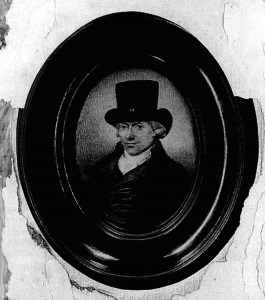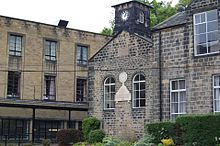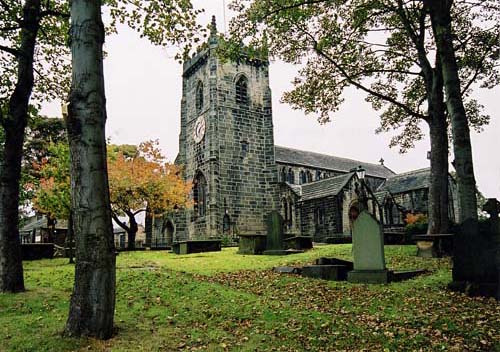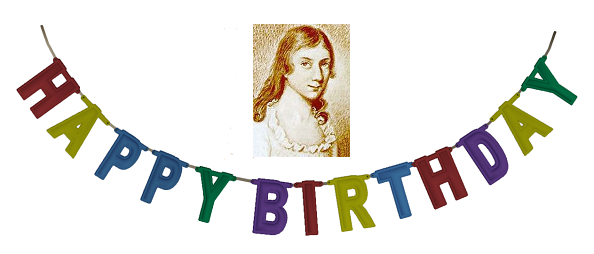Today marks the 235th birthday of a very special woman – Maria Brontë, born Maria Branwell, the mother of the Brontë siblings: Maria, Elizabeth, Charlotte, Patrick Branwell, Emily Jane, and Anne.
Maria Branwell was born into a prosperous and well connected merchant family in Penzance, Cornwall on 15th April 1783. Her father Thomas Branwell was a wealthy businessman, and under him the Branwell property empire and fortunes grew. Maria’s brother Benjamin rose to become Mayor of Penzance, but she was particularly close to her sisters Charlotte and Elizabeth, who would become better known as Aunt Branwell after sacrificing everything to raise Maria’s children after her tragic and untimely passing.

It was the death of Maria’s parents Thomas and Anne that led her, in the summer of 1812, to make the arduous journey from Cornwall to Yorkshire to work as an assistant in a school that had been opened by her Aunt Jane and Uncle John Fennell (as a comparison, this is a longer journey in miles than the one her daughters Charlotte and Emily would later take when they travelled from Haworth to Brussels).
The school was in Rawdon, between Bradford and Leeds, and John Fennell had recently recruited a new classics examiner for the schoolchildren. It was a friend of his from his days in Shropshire who had also moved to Yorkshire. He was of course Patrick Brontë, and when he and Maria first saw each other it was love at first sight. The rest, as they say, is literary history.
One part of Maria’s story that is often overlooked is that she herself was a brilliant mind and an excellent and fluid writer, as Charlotte Brontë found out as an adult when presented with a very special gift by her father. It was a lovingly preserved and cared for package of her mother’s letters, and the effect on her was very moving:
‘It was strange now to peruse for the first time the records of a mind whence my own sprang – and most strange – and at once sad and sweet to find that mind of a truly fine, pure and elevated order. They were written to papa before they were married – there is a rectitude, a refinement, a constancy, a modesty, a sense, a gentleness about them indescribable. I wished she had lived and that I had known her.’
We still have some of Maria’s love letters to Patrick, who she christened ‘my saucy Pat’, and they are beautifully written, often playful, but most obviously full of love. By this time neither she nor Patrick were in their first flush of youth, she was approaching her thirtieth birthday and he was six years older, but they fell head over heels for each other almost instantly, and were married within six months of their first meeting.
As early as 5th September 1812 their love is evident, as is the fact they had already decided to be together:
‘O my dear friend, let us pray that we may live lives holy and useful to each other and all around us! I pitied you in your solitude, and felt sorry it was not in my power to enliven it.’
By 18th September, Maria was writing:
‘I believe a kind Providence has intended that I shall find in you every earthly friend united; nor do I fear to trust myself under your protection, or shrink from your control. It is pleasant to be subject to those we love.’

Maria was certainly having an effect on Patrick too, and he could think of nothing but his love to the point where he often forgot anything else. After forgetting to tell the Fennells about visitors to the school that he had arranged, John Fennell thought Patrick’s behaviour had become so out of character that he should be sent to the lunatic asylum in York (presumably he only said this in jest). Maria reports this in the same letter as above:
‘I do not know whether you dare show your face here again or not after the blunder you have committed. When I got to the house on Thursday evening, even before we were within the doors, we found that Mr and Mrs Bedford had been there, and that they had requested you to mention their intention of coming – a single hint of which you never gave. They all agreed that I was the cause of it. Mr Fennell said you were certainly mazed and talked of sending you to York. Even I begin to think that this bears some mark of insanity!‘
By 24th October, their feelings for each other were in no doubt, as Maria writes:
‘Unless my love for you were very great how could I so contentedly give up my home and all my friends… Yet these have lost their weight… the anticipation of sharing with you all the pleasures and pains, the cares and anxieties of life, of contributing to your comfort and becoming the companion of your pilgrimage, is more delightful to me than any other prospect which this world can possibly present.’
The last surviving letter of Maria’s extant today is dated 5th December:
‘We intend to set about making the cakes here next week, but as fifteen or twenty persons whom you mention live probably in your neighbourhood, I think it will be most convenient for Mrs Bedford to make a small one for the purpose of distributing there, which will save us the difficulty of sending so far.’

The cakes were for their wedding, as they were married in Guiseley’s St. Oswald’s church 24 days later. These were the letters that Charlotte Brontë loved to read, and they revealed a warm, witty, loving woman. This is how we should remember Maria Brontë, nee Branwell, as well as for the brilliant family she bore, as we say ‘Happy birthday, Maria Brontë!’ Incidentally, we’ll be saying that again in a week’s time, in a sense and for a different reason, as although we don’t know the exact date her first child, the kind, brilliant and prodigious genius Maria Brontë junior, was born, she was baptised on 23rd April 1814.

It was such a tragedy that none of the children really knew their mother as the happy and witty woman Maria Bronte obviously was. I also find it interesting that all her children’s names bar Emily were family names. Do you know how her name was chosen or was it one that they simply liked?
Good question, it’s one I look at in my new book on Emily as she’s the only Bronte not named after a relative (although her middle name Jane seems to be a tribute to Maria’s cousin and aunt Jane who were at the school where Maria and Patrick met). The short answer is nobody knows, I’ve tried to find Emilys they may have known at Thornton and drawn a blank. My guess is it must have been a close family friend we don’t know about now.
Terrific post Nick! Those Maria Branwell letters always remind me of Charlotte’s…just from another time . It must of been amazing for CB to have her mother ‘s WORDS before her, being a woman of words herself. Words indeed have ” indescribable” effect on such a person . I have often wished Patrick shared those letters earlier, with Anne and Emily too…particularly, Anne . How they would have thrilled her!
Interesting that Emily and Branwell are the only two of the six Bronte children with two names